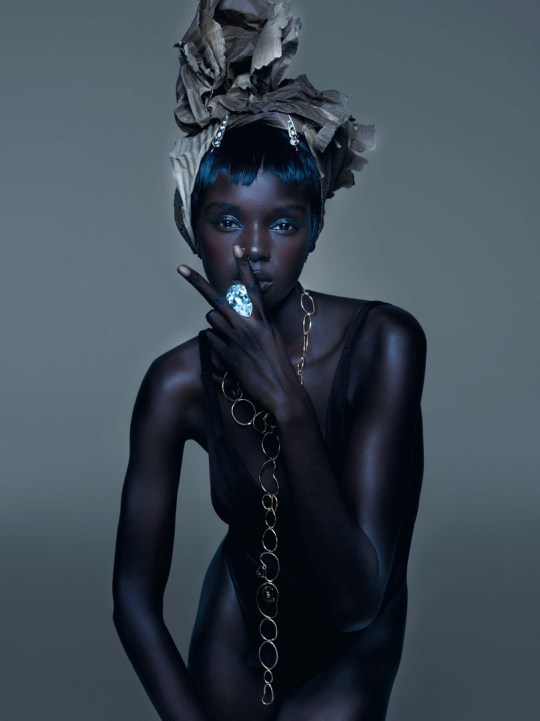#marian newman
Photo

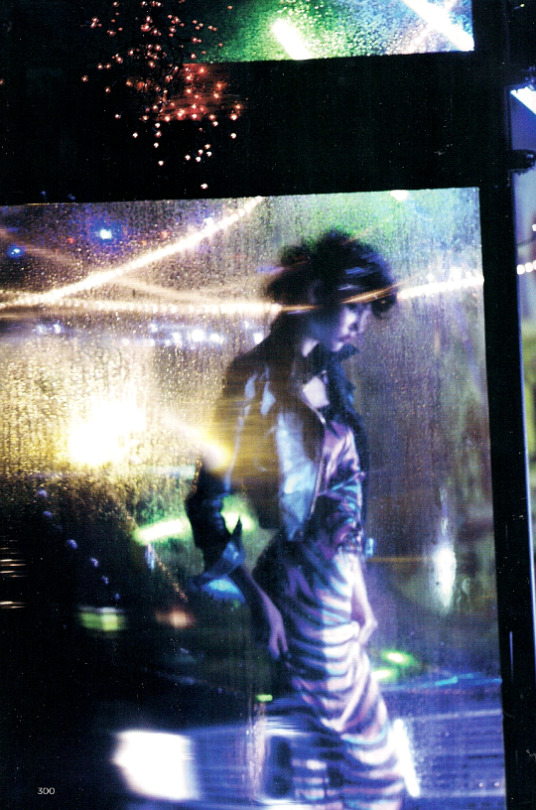

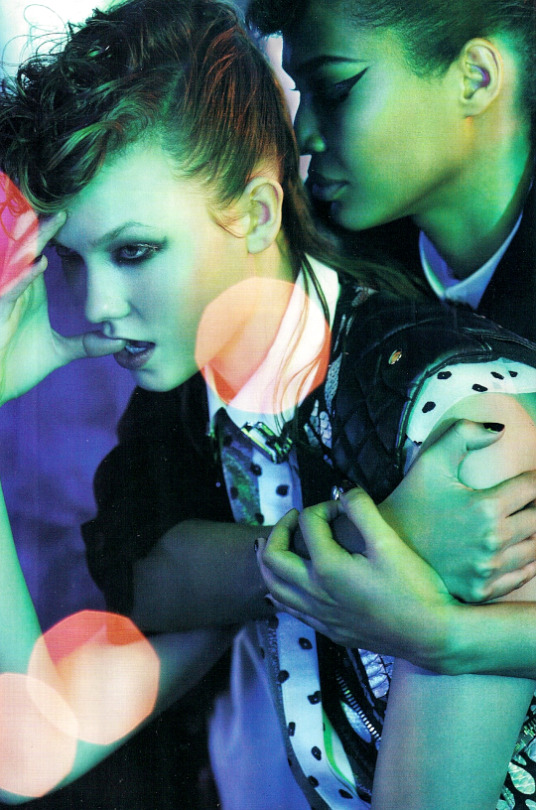

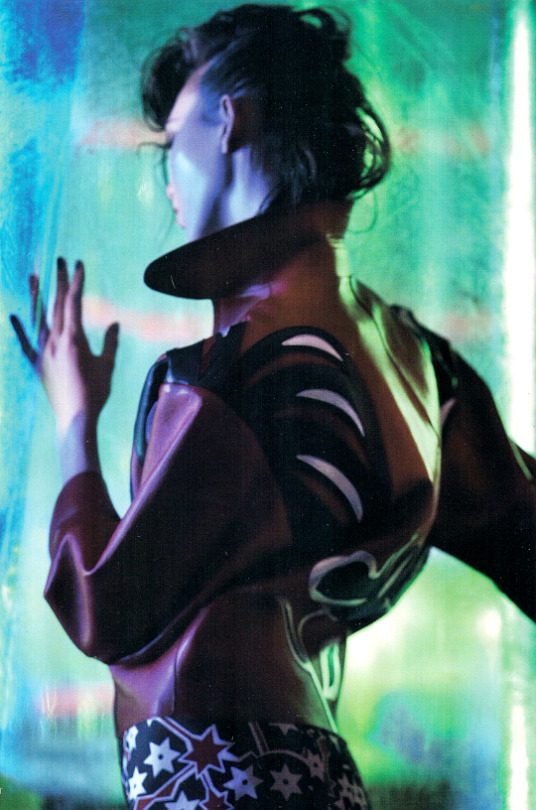
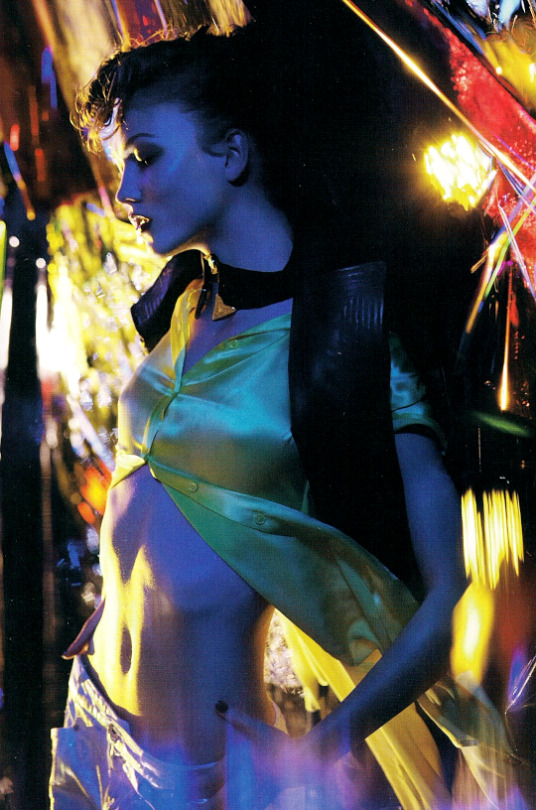
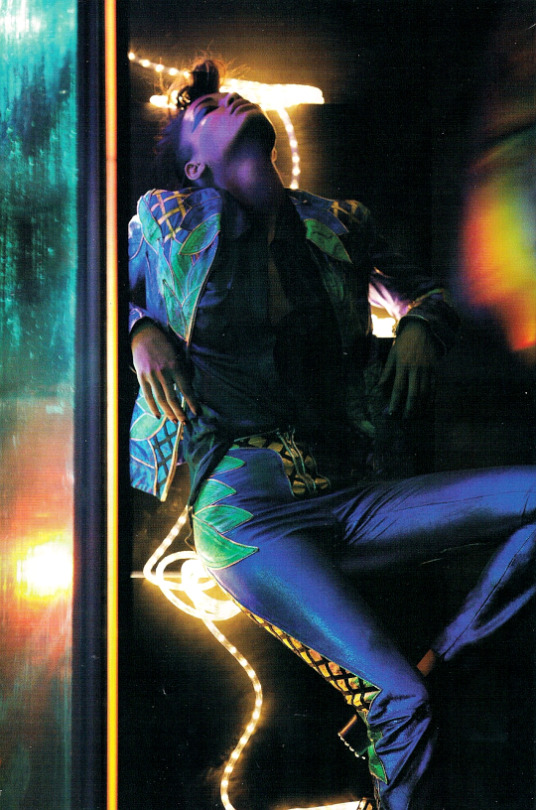
"mean streets" : joan smalls & karlie kloss by nick knight for vogue mar '11
hair by sam mcknight, makeup by val garland, nails by marian newman
5 notes
·
View notes
Text

#traditional catholicism#traditional catholic images#traditional catholic modern art#traditional catholic quotes#bishop john henry newman#traditional catholic bishops#bishop john henry newman quotes#the blessed virgin mary#traditional catholic marian theology
1 note
·
View note
Text
Modern Saint Bracket Announcement

Instead of waiting until Sunday, the modern bracket will open immediately after the post-schism bracket is over. This is the modern bracket, which will be followed by a final four, and then there will be even MORE polls (losers' brackets, Marian apparitions, we're going all summer baby.)
Catholic Saint Tournament Modern Bracket Round 1 Pairings:
St Therese of Lisieux vs St Elizabeth Ann Seton
St Padre Pio (of Pietrelcina) vs St Charles de Foucauld
St Maximilian Kolbe vs St Benilde Romancon
St John Bosco vs St John Neumann
St Mother Teresa (of Calcutta) vs St Arnold Janssen
St Jacinta Marto vs St Edith Stein
St Maria Goretti vs St Marianne Cope
St Charles Lwanga (& co) vs St John Vianney
St Oscar Romero vs St Josemaria Escriva
St Bernadette vs St Damian of Molokai
St Faustina vs St Catherine Laboure
St Mary MacKillop vs St Katharine Drexel
St Gemma Galgani vs St Frances Xavier Cabrini
St John Henry Cardinal Newman vs Pope St John Paul II
Pope St John XXIII vs St Mark Ji Tianxiang
St Francisco Marto vs Sts Louis & Zelie Martin (package deal)
You can still submit nominations for beatified folks, propaganda for your favorite saints, or other thoughts in the ask box! Or suggestions for future polls, questions, etc.
May the best saint win!
#st therese of lisieux#st elizabeth ann seton#padre pio#st padre pio#st charles de foucauld#st maximilian kolbe#st benilde romancon#st john bosco#st john neumann#mother teresa#st mother teresa#st arnold janssen#st jacinta marto#st edith stein#st maria goretti#st marianne cope#st charles lwanga#st john vianney#st oscar romero#st josemaria escriva#st bernadette#st damian of molokai#st faustina#st catherine laboure#st mary mackillop#st katharine drexel#st gemma galgani#st frances xavier cabrini#st john henry newman#pope st john paul ii
21 notes
·
View notes
Text
sorry i haven't been super active </3 infodumping about marian and kireek here
first… newmans are genetically engineered, and i did say that i wanted to reuse ideas i had for my dbz ocs for them, since this is something i don't think i'll lose the passion for anytime soon, plus vtsom inspired me with the opening monologue about how memories + experiences shape who we are, and what would happen if memories were implanted within someone
newmans (and casts by extension) would likely have basic knowledge 'uploaded' into their brains, so upon their creation they have years of knowledge crammed into there but no life experience to back it up. they're essentially thrust into life expected to carry out tasks for humans, while not having the tools to do what they're meant to do
this plays into marian's character very well, with how they've got certain (skewed) expectations in their head about how the world works, and they're not very skilled in applying their knowledge because of their lack of lived experience. marian has these ideas built up in their own head about how things should be, and acts accordingly to the imagined situations in their head
the other idea i had was that since there's the (non-canon) subplot where kireek gets infected by d-cells, i could have an alternate take where marian also succumbs to d-cell infection. basically in the game, events in the side story can unfold in a couple of different ways depending on the order you do things and whether or not you tell sue your name in the quest 'dr. osto's research', if you tell sue your name you get more insight into black paper and the military, while if you don't tell sue your name, she doesn't show up later and kireek hunts you down, driven insane by dark falz' influence
so, since in this version of the subplot you kill kireek and get his scythe, i thought 'what if marian succumbs to d-cell infection as well due to extensive handling of a weapon that was used by someone who was infected?' the soul eater saps the life force of the user, too, so marian would be more susceptible, and it's an opportunity to do something regarding descructive love/obsession and the idea of someone built up in your head VS the real person. kireek's scythe being the thing that leads to marian's deteriorating physical and mental state, and eventual death
it ties in nicely with marian operating on their own preconceived notions, and kireek in the subplot saying his life has no meaning when he's not in battle. marian who lives inside their own head, alone with their thoughts + kireek who is passively suicidal and has nothing without marian. easy to see how their relationship could go wrong and they bring each other down, in a 'bad ending' scenario
6 notes
·
View notes
Video
youtube
John Wayne | Rock Hudson |The Undefeated (1969) | Civil War Western Classic
The Undefeated was an American Civil War-era Western film directed by Andrew V. McLaglen. The movie stars John Wayne and Rock Hudson, it was released in 1969. Cast John Wayne as Colonel John Henry Thomas Rock Hudson as Colonel James Langdon Tony Aguilar as General Rojas Roman Gabriel as Blue Boy Marian McCargo as Ann Lee Meriwether as Margaret Merlin Olsen as George 'Little George' Melissa Newman as Charlotte Bruce Cabot as Confederate Sergeant Jeff Newby Michael Vincent as Lieutenant Bubba Wilkes Ben Johnson as 'Short' Grub Edward Faulkner as Anderson Harry Carey Jr. as Webster Paul Fix as General Joe Masters Royal Dano as Major Sanders Richard Mulligan as Dan Morse Carlos Rivas as Diaz John Agar as Christian Guy Raymond as Giles Don Collier as Goodyear Big John Hamilton as Mudlow Dub Taylor as McCartney Henry Beckman as Thad Benedict Víctor Junco as Major Tapia Robert Donner as Judd Mailer Pedro Armendariz Jr. as Escalante James Dobson as Jamison Rudy Diaz as Sanchez Richard Angarola as Petain James McEachin as Jimmy Collins Gregg Palmer as Parker Juan García as Colonel Gomez Kiel Martin as Union Runner Bob Gravage as Joe Hicks You are invited to join the channel so that Mr. P can notify you when new videos are uploaded, https://www.youtube.com/@nrpsmovieclassics
2 notes
·
View notes
Text
Is there still a Ducktales fandom here? Most of the blogs I followed around the 2017 times have either changed subjects or gone quiet. Well, anyway, if anybody’s still here:
I started rewatching Ducktales 2017 over the holiday, with the intent of finally finishing the last few episodes! I’m in the middle of s2 and very excited. So I went through and started editing my playlist, which hasn’t really been updated since season 1. And I’m wondering if any other fans out there have any song ideas. I’d like to have a fairly equal amount of songs for each major character, and so far my favorites tend to be over represented.
Here’s what I have so far:
General amusement songs:
Ducktales theme song
Quack Quack Quack! Donald Duck
The Three Caballeros Song
Scrooge
The Saddest Story Ever Told by The Magnetic Fields
Hazy Shade of Winter by Gerard Way
Feel It Still by Portugal. The Man
Inside Out by Eve 6
We Are the Champions by Queen
Donald
Trouble Loves Me by Morrisey
The Worst Day Since Yesterday by Flogging Molly
Come With Me Now by Kongos
Battle Cry by Ludo
Return by OK Go (although it’s about Della, from his perspective)
Della
Song of the Sea by Cake Bake Betty
Got to Fly by Marian Call (the best Della song)
Rocket Ship by Kathy McCarty
Huey
The Trail We Blaze by Elton John
Overkill by Colin Hay (I kinda want to replace this one)
In Too Deep by Sum 41
Everything is Awesome by Tegan and Sara
Dewey
Ready for Anything by Skyway Flyer
A Little Less Conversation by Elvis Presley (the Megamind cover)
Ghost by Mystery Skulls
Louie
Plan B by Five Iron Frenzy
Heist by Ben Folds Five
Here It Goes Again by OK Go
Natural by Imagine Dragons
The Future by Mystery Skulls
Webby
Kids in the Dark by All Time Low
I’m Ready by Angela Michael
Try Everything by Shakira
Beakley
Have You Got It In You? by Imogen Heap
Launchpad
Crash Goes My World by Cadence Grace
Flying by Blue Rodeo
Mr Blue Sky by Electric Light Orchestra
All Star by Smash Mouth (the best Launchpad song)
Bud Like You by AJR
Holding Out For a Hero by Bonnie Tyler (favorite recent addition, it’s both perfect and hilarious)
Learn to Fly by Foo Fighters
Gyro
Build the Robots by Doctor Steel
Still Alive from Portal
Fenton (should note that his section is a bit of a mess and may include songs that don’t work very well because I was just tossing songs in there to see what would stick)
Rocket Man by Elton John (although it works better for Classic Fenton than 2017 Fenton)
A Better Son/Daughter by Rilo Kiley
Freaking Out by Mystery Skulls
The Safety Dance by Men Without Hats (haven’t tested it yet, but the idea amused me)
Hero by Chad Kroeger
Little Lion Man by Mumford and Sons
Mighty Little Man by Steve Burns
Consequences by Buffering the Vampire Slayer
We Are by Ana Johnson
Lena
Opheliac by Emilie Autumn
Glomgold
Opportunities by Pet Shop Boys
Reprehensible by They Might Be Giants
Mark Beaks
Whipped Cream by Ludo
Welcome to the Internet by Bo Burnham
Gladstone
Life Has Been Good To Me by Randy Newman
…and that’s it. As you can see, it does not feel like a complete playlist, covering neither every character nor any full arcs. …except maybe Launchpad who’s pretty well represented with some good and great songs for him. My sister has suggested I try Let the Games Begin and The Good Part by AJR, as well as You Won’t Make a Fool Out of Me by Flogging Molly for Donald, but I would like some songs I haven’t heard by different artists, if possible. Also, please note that I haven’t seen the last five or so episodes of the series yet; I have approximate knowledge of The One Thing, but otherwise am avoiding spoilers until I finish.
Any ideas?
14 notes
·
View notes
Text
The Protestant Virgin Mary: Protestants and the Catholic Mary
“Because the Protestant Virgin Mary was conceived in part as a means by which to undermine the Catholic version, Protestants had to confront that image directly. One of their principal objections to the Catholic Virgin Mary was theological: that, by becoming an object of devotion in her own right, she claimed the attention due to the Trinity alone. Protestants frequently criticised Roman Catholics for praying to Mary in the same way as they prayed to God, thus erasing the distinction between Creator and creature.
The anti-Tractarian evangelical divine Edward Bickersteth (who worked to convert Jews as well as Roman Catholics) charged that ‘in their ordinary worship they [Roman Catholics] intermingle devotions between God, the Virgin, and the saints’. Worse still, Roman Catholics were said to ignore God in order to pray to Mary. A member of the Northampton Mission of the Protestant Reformation Society described a ‘GREAT VOTARESS’ of the Virgin Mary who refused to listen to any talk of God, but insisted to her Protestant interrogator ‘betake yourself to the blessed Mother of God’, whom she credited with saving souls from hell.
This complaint was sufficiently familiar to have appeared in fiction, as well: the Roman Catholic priest in Kingsley’s novel Yeast prays to Mary instead of to God. As William Palmer of Worcester College, Oxford – a traditional high-church cleric who was one of Froude’s ‘Zs’ and (at the time) a friend of Newman – summed up the situation in the first of eight public letters he wrote in defence of the Church of England to Nicholas Wiseman, the Catholic Mary ‘receive[d] honours which are due only to the Trinity – honours which interfere with the sole prerogatives of the Deity’.
Protestants described Mary as having been deified by the Roman Catholic Church being ‘directly worshipped in the Roman Church’, and even as having been ‘installed as a fourth person of the Godhead!’ Because Protestants hardly ever publicly disagreed with the contention that Roman Catholics essentially worshipped Mary, Protestant controversialists could then argue that the powerful, prominent, Catholic Mary demonstrated ‘the absolute conformity of modern popery to ancient paganism’.
Protestants declared that Mary was but an updated version of ancient goddesses, including Juno, Venus, Isis, Astarte, and Minerva. Walter John Trower, the Anglican Bishop of Gibraltar, confided to his close friend the anti-Tractarian clergyman Charles Pourtales Golightly that his tours of the Continent had left him ‘convinced that the religion of these countries (especially Spain) is virtually Semi-Pagan; & ... the worship of B[lessed] V[irgin] M[ary] is the legitimate progeny of a substitute for the worship of the Magna Dea’.
While Trower made his point in a private letter, the characterisation was common enough to be found in popular novels like Romola, in which the rededication to the Virgin Mary of Pallas Athena’s Temple in Athens implied a connection between the two women. The frequency and confidence of such assertions made it easy for Catherine Sinclair to conclude: ‘The religion now taught by Romanists cannot be called Christianity, but is Mariolatry, a perfectly different faith.’ As evidence for these charges, Protestants generally cited earlier continental rather than contemporary English devotional sources.
To some extent they were forced to do so, because the relatively more restrained recusant and Victorian prayers provided few examples of the devotional fervour necessary to build their case. Additionally, continental sources allowed Protestants to depict Catholicism as a foreign religion, one that should be repudiated by good English men and women. Evidence for idolatrous Marian devotion was found in the Psalter reputedly compiled by St Bonaventure, which, as Tyler chided, ‘substitut[ed] Mary’s name for the God of Christians’.
Another favoured example was the medieval story of the two ladders. Birks warned the Bristol Protestant Alliance: Pictures have been printed and circulated, under the sanction of priests, in which two ladders are set up, reaching into heaven. At the top of one ladder is Christ; of the other, the Virgin. Those who strive to ascend the first, are seen falling back into the flames of hell through the inexorable severity of the Judge; but those, who choose the other ladder, are received into heaven, through the grace and intercession of the Virgin.
Protestants regularly invoked this story as evidence that ‘Romanism teaches that Mary is more merciful, and more willing to welcome sinners, than that Divine Saviour’. The Church and state gazette, an Anglican weekly newspaper, went further, declaring that it offered ‘proof of what the cardinal [Wiseman] and his co-religionists so often deny – namely, that the most blessed Virgin is exalted by the Romish Church into an object of worship, and invested with a power, unwarranted by Scripture, above that held by her gracious Son, our Lord and Saviour’.
By far the most frequently invoked example of ‘Mariolatry’ was an eighteenth-century work, Alphonsus Liguori’s The glories of Mary, a compilation of ‘miracles, revelations, favours, and particular cases’ demonstrating the efficacy of Virgin Mary’s intervention. Thomas Hartwell Horne, an evangelical Anglican clergyman and biblical scholar, condemned Liguori’s Marian devotions for exhibiting ‘idolatry’; Charles Hastings Collette, a solicitor who wrote numerous anti-Roman Catholic works, found those devotions to be ‘gross and glaring blasphemies’.
Palmer’s conclusion that Liguori ‘declares that the Virgin is a Goddess’ was widely shared by Protestant controversialists. One of the main objections to Liguori was his acceptance of the medieval belief, popularised by St Bernard of Clairvaux: ‘No grace, no pardon, emanates from the throne of the King of kings without passing through the hands of Mary.’ Collette complained that, in The glories of Mary, ‘Innumerable miracles are, likewise, said to be performed through the instrumentality of the Virgin, to attest [to] her all-powerful and omnipresent existence’.
Those miracles, which included securing confession for severed heads, saving a young man who sold his soul to the devil, and securing the escape of birds from hawks by crying out ‘Hail Mary’, were, the Church and state gazette declared, ‘enough to make the hair stand on end on the head of every one who is not willingly and blindly an idolator’. Using continental sources to prove their point that the Catholic Virgin Mary was a pagan goddess allowed Victorian Protestants to argue that Roman Catholicism was a foreign religion, and thus that neither it nor Anglo-Catholicism should be countenanced by the English.
Italian Marian images were most often invoked as evidence that Roman Catholics were pagan idolators. The geographical coincidence that Italy was both the seat of the Roman Catholic Church and the site of numerous pagan ruins enabled Protestants to link paganism and Roman Catholicism: they ridiculed the Pope as ‘the trembling, temporising Priest of the Virgin’ and Italians in general as ‘a superstitious people’.
‘If the “devotional feelings” of an Italian towards the Virgin are greater than towards his God’, Palmer argued, ‘I cannot but think that (whatever his faith may be in theory) the Virgin is practically his God’; while Seymour concluded that ‘the religion of Italy ought to be called the religion of Mary, rather than the religion of Christ!’ These Victorians are the counterparts to those described by Maura O’Connor in The romance of Italy and the English political imagination, whose support for the political unification of Italy led them to describe the Italians as rational citizens who were worthy of self-government.
Those Victorians who feared the adulteration of their Protestant religion were motivated instead to describe Italians as the childlike practitioners of a corrupt religion. As an Italian Jesuit reportedly assured Seymour, ‘the Italians were a people very different from the English; that the English loved a religion of the heart, and the Italians a religion of the senses; the English a religion of the feelings, and the Italians a religion for the taste; the English an inward and spiritual religion, and the Italian [sic] an outward and visible religion’.
Whether or not Seymour had an actual source for these comments, they did convey his belief, which was shared by many Victorian Protestants, that national differences manifested themselves in religious differences. Roman Catholics, who were synonymous with foreigners, were repeatedly described as practising a superficial, sensual religion, in contrast to the Protestant English, who sought a more reflective, spiritual relationship with their God. Surprisingly, Protestants paid little attention to Ireland and France, the two countries that historically had given the English the most worry.
The Irish were rarely accused of ‘Mariolatry’, even though many of the more baroque images of the Virgin Mary came from periodicals published in both London and Dublin (the most famous of which was the Dublin review). This absence was due partly to the fact that anti-Roman Catholic and anti-Irish feelings were not necessarily identified one with the other in Victorian England, for anti-Roman Catholicism was already well-established by the time waves of Irish immigrants entered England in the 1840s.
Given the regularity with which the ‘Irish question’ intruded on Victorian Britain’s politics, and the frequent intermingling of political and religious questions in the nineteenth century, this absence is also likely a result of the scarcity of Irish contributions to Victorian discourse about the role and nature of the Virgin Mary. Most of the extant sources are printed texts, which would have been the most widely circulated and thus the best means for entering the arena.
None of those texts seems to have been the work of any members of the largely working-class Irish immigrant population. In addition, Roman Catholic priests usually relied on sermon notes rather than writing out their sermons, and thus it would not have been easy for them to publish their sermons, as their Anglican and dissenting counterparts often did. The lack of published sermons removed a source to which Protestants could respond.
The scarcity of examples of Irish idolatry also reflected the travelling and living habits of those with the greatest access to the pulpit and the press: the English were far more likely to go to the Continent for the Grand Tour or for reasons of health or economy than to go to Ireland. (It was not until 1877 that Gladstone, whose career was so connected to the ‘Irish question’, made his first and, except for an extremely brief visit of several hours in 1880, only visit to Ireland; Benjamin Disraeli never crossed the Irish Sea.)
Therefore, although it loomed large in the English imagination, few Victorians had any first-hand experience of Ireland. In addition, while the English had long viewed Ireland as populated by inferior people who were potentially or actually subversive, self interest encouraged them to see the Irish as closer to being their equals, as Catholic emancipation (1829), the disestablishment of the Church of Ireland (1869), and the drive for Home Rule gave the Irish more of a role in political affairs.
Furthermore, Irish peasants represented little threat to English superiority: English men and women who were worried about protecting their political, social, and cultural hegemony were threatened more by the well-born, well-educated, and prominent Anglican converts to Roman Catholicism than by Irish peasants, about only half of whom were practising Roman Catholics, and in whom Roman Catholicism was understood to be an hereditary disability rather than a conscious choice.
French devotional practices were condemned somewhat more frequently, but again less than might be expected. This has much to do with changing circumstances in which foreign policy was made. As Linda Colley has noted, by 1837 ‘[v]ictory at Waterloo, and the onset of peace with dominance, meant that Britons were less likely to associate the Catholic presence at home with a military threat from abroad’.
With the proviso that the English continued to perceive a Catholic threat to their Protestant religion, I would extend Colley’s view to say that England’s growing military dominance and the improvement of AngloFrench relations under Victoria – notwithstanding occasional invasion scares, as at mid-century – meant the English were less likely to fear French invasions, either military or religious. In spite of the centuries long animosity between the English and the French, Britain and France allied themselves for the Crimean War (1853–56).
After Napoleon III (r. 1850–70) came to the throne, the ruling families of Britain and France became friendly, even exchanging family visits. These developing connections, along with the anti-clericalism that had characterised a significant part of French society since the Revolution, made it in general less appealing to target the French as pagan idolaters. As the identification of Marian devotion with other countries, especially Italy, shows, Victorian anti-Roman Catholicism was one expression of the traditional belief of the English in their national superiority, or rather of the traditional project of the English, evident since at least the eighteenth century, to convince themselves of their national superiority.
In the nineteenth century this national stereotype was often expressed in racial terms. As L. P. Curtis has noted: ‘Eminent Victorians, all of them intolerant to some degree, who were looking for a simple, unalterable, and universal affirmation of the superiority of English or Anglo-Saxon civilisation, clung to the notion of hierarchy or worth among the races of man.’ Victorian racial theories held that Anglo-Saxons were a superior group of people with a common Teutonic origin, thereby separating the English first from the Celts and then from ‘the savages of the non-Western world, in whom the Celtic character was painted with a darker brush’.
Victoria and Albert’s clothing, including their costumes for the masked balls Albert enjoyed during the early years of their marriage, were chosen, often by Albert, to identify them as British, even Anglo-Saxon, thus asserting a shared racial past in hopes of contradicting the reality that Albert was a foreigner. English Protestants were not entirely convinced, however, that their position at the apex of the hierarchy was secure.
In an age of pseudoscientific racial theorising, Victorians worried about the contamination of Anglo-Saxon purity by other groups, including continental ‘races’. They worried also that the growth of Catholicism would corrupt the Protestant religion which was integral to their sense of superiority. In 1864, the cleric Gordon Calthrop preached that the rapid growth in the number of Roman Catholic convents made it ‘absurd to shut our eyes to the fact, that Romanism is lengthening her cords, and strengthening her stakes, and extending and consolidating her influence, in the very heart and centre of this Protestant opposition’.
As late as 1875, when anti-Roman Catholicism was waning, a Protestant journal could report: ‘People are alarmed at the progress Romanism has made of late years. When they see here a convent and there a church, they lift up their hands in amazement and ask, Are the old times to return, and is Rome once more to enslave the land?’ The popular depictions of English Roman Catholicism as a foreign religion had little basis in fact, especially given the continuation of the recusant spirituality that Mary Heimann has shown characterised Victorian Roman Catholicism.
Although Susan O’Brien and other traditionalists have noted the influence transmitted by, for example, continental religious orders, the continued popularity of recusant devotional works throughout the nineteenth century provides strong evidence of a more moderate, and traditionally English, style of Roman Catholicism. While Protestants were far more likely to cite continental sources to buttress their portrayal of Roman Catholicism as a corrupt foreign religion, these were too fervent and florid to be typical of English Roman Catholicism.”
- Carol Engelhardt Herringer, “The Protestant Virgin Mary.” in Victorians and the Virgin Mary: Religion and Gender in England 1830-1885
#carol engelhardt herringer#victorian#english#history#cw: racism#religion#christian#victorians and the virgin mary
12 notes
·
View notes
Note
what's your favorite thing to design/draw in regards to your inserts? (i.e. hair, outfits, extra accessories, etc.)
[ @/kentofukamiya ]
eyes and hair, as well as accessories! i consider certain design aspects of my self inserts very iconic, like marian's little glasses and agnatha's capelet, and madelon's side braid (which mysteriously switches sides depending on the angle i draw them at... like a video game sprite almost)
through my design process for self inserts i usually start with an idea, and that idea includes something that sticks out to me and stays with all iterations of their design. i plan to make a new design for marian post-episode i where they ditch the fomarl outfit, since they aren't even human - they would be a fonewearl or fonewm (pso classes are decided by playstyle/race/binary gender unfortunately, so i picked a class i enjoyed playing and liked the outfits for and then tied the rest of their lore into that. they're a sort of 'pseudo newman' who has more subtle pointy ears and used only one specific human as a genetic template, which is where the name marian comes from)
#^ last thing is lore i have yet to elaborate on btw#but out of lore theyre named after a sisters of mercy song loool
1 note
·
View note
Text

2 notes
·
View notes
Photo



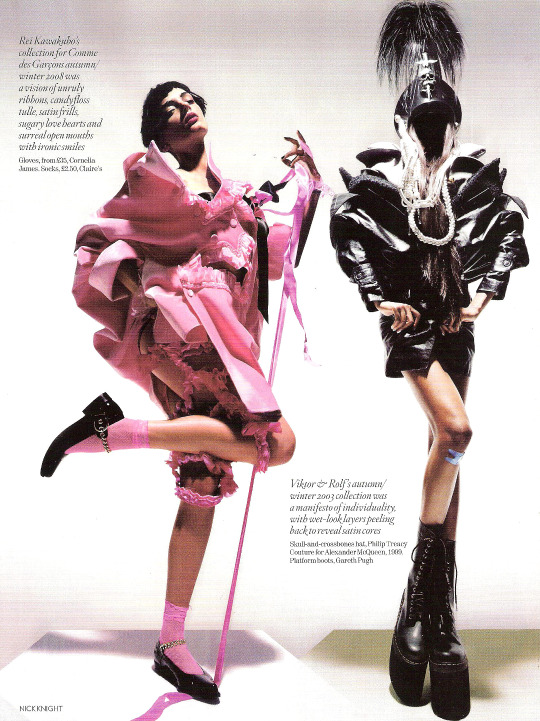




"unbelievable fashion" : jourdan dunn & lily donaldson by nick knight for british vogue dec '08
hair by sam mcknight, makeup by val garland, nails by marian newman
2 notes
·
View notes
Text
Happy Birthday 🎂 🥳 🎉 🎈 🎁 🎊 To You
The Curly Haired Italian 🇮🇹 American Actress Of The 1980s & The Sister Of Al Pacino's SCARFACE, Gina Montano
Born On November 17th, 1958
Mastrantonio was born in the Chicago suburb of Lombard, Illinois, to Frank A. Mastrantonio and Mary Dominica (née Pagone), both of Italian descent. Her father operated a bronze foundry. She was raised in Oak Park, Illinois, and studied drama at the University of Illinois. She worked summers at the Opryland USA theme park to earn money for college.
She is an American actress. She made her Broadway debut in the 1980 revival of West Side Story, and went on to appear in the 1983 film Scarface as Al Pacino's character's sister, Gina Montana, which proved to be her breakout role. For her role as Carmen in the 1986 film The Color of Money, she was nominated for the Academy Award for Best Supporting Actress. Her other film roles include The Abyss (1989), Robin Hood: Prince of Thieves (1991), and The Perfect Storm (2000). In 2003, she was nominated for the Tony Award for Best Actress in a Musical for the Broadway revival of Man of La Mancha.
Mastrantonio first appeared on screen in Brian De Palma's Scarface (1983) as Gina, sister of Al Pacino's Tony Montana. She achieved prominence for her Oscar and Golden Globe-nominated role in The Color of Money (1986) opposite Paul Newman and Tom Cruise.
Her other featured roles include Slam Dance (1987), with Tom Hulce, and The January Man (1989) with Kevin Kline. She also starred in writer/director James Cameron's science fiction The Abyss (1989) with Ed Harris. She played Maid Marian in the film Robin Hood: Prince of Thieves (1991) with Kevin Costner. She played the attorney daughter of Gene Hackman's character in Class Action, co-starred in the 1992 thriller Consenting Adults, and played a fishing boat captain in The Perfect Storm (2000).
Please Wish This Iconic & Incrediblely Talented Beautiful Italian🇮🇹 America Actress Of The 1980s , A Very Happy Birthday 🎂 🥳 🎉 🎈 🎁 🎊
The 1 & Only
MS. MARY ELIZABETH MASTRANTONIO🇮🇹❤ AKA GINA MONTANO OF AL PACINO'S SCARFACE
HAPPY 65TH BIRTHDAY 🎂 🥳 🎉 🎈 🎁 🎊 TO YOU & HERE'S TO MANY MORE YEARS TO COME #MaryElizabethMastrantonio #Scarface #GinaMontano #RobinHoodPrinceOfThieves #MaidMarian

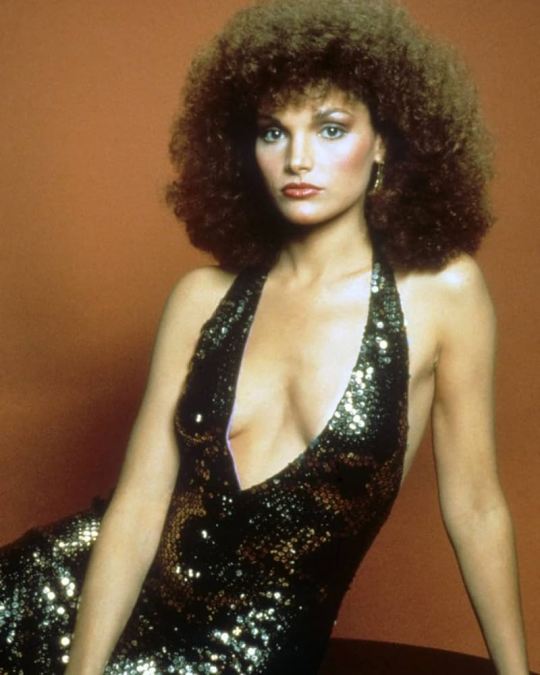


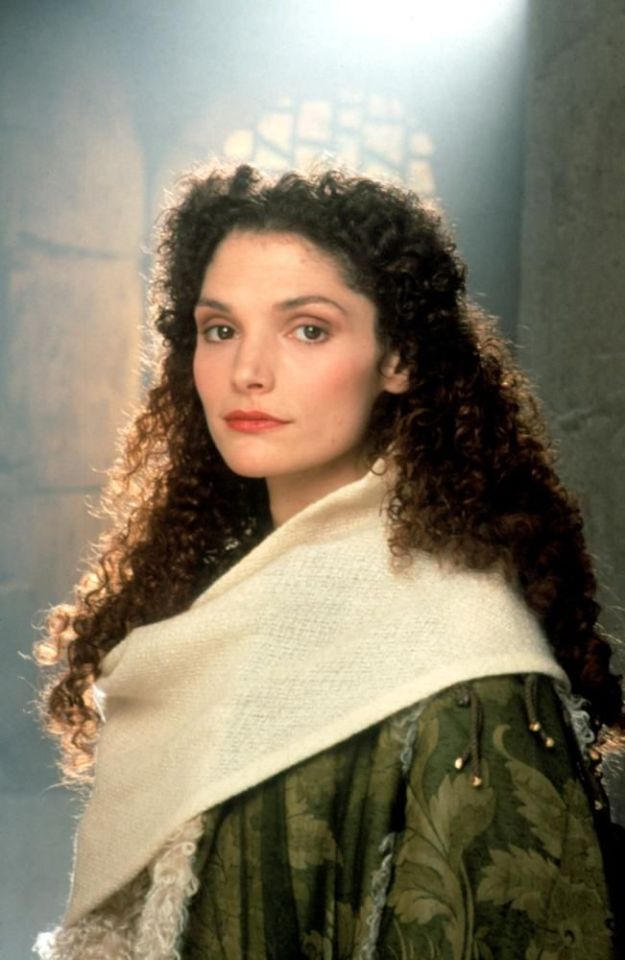


1 note
·
View note
Text
10/13 おはようございます。Mfsb / Universal Love KZ33158 等更新完了しました。
Jane Powell / Can't We Be Friends mgv2023
Eydie Gorme / Gormé Sings Showstoppers abc-254
Dinah Shore / Dinah Yes Indeed T1247
Howard Rumsey / Lighthouse at Laguna C3509
Marian McPartland / plays Music of Leonard Bernstein 52013
Junior Cook / Junior's Cookin' jlp958
Lionel Hampton / Flying Home MGC-735
Sonny Criss / Portrait of Prst7526
Howard Roberts / Whatever's Fair st-2478
Stan Getz / Pure Getz cj188
Jim Hall / Circles cj161
Jimmy Castor / Hey Leroy MGS-27091
David Newman / Mr Fathead bs2917
Baden Powell / Solitude on Guitar c32441
Little Feat / Dixie Chicken bs2686
Frank Zappa / 200 Motels Uas9956
Frank Zappa / Apostrophe k59201
Mfsb / Universal Love KZ33158
El Coco / Cocomotion - Love To The World avi-147-s
Bumblebee Unlimited / Everybody Dance - Funk for Days 73907
~bamboo music~
530-0028 大阪市北区万歳町3-41 シロノビル104号
06-6363-2700
0 notes
Text
TOM CRUISE
He was born in Syracuse, New York,11 on July 3, 1962, he is the son of the electronic engineer Thomas Cruise Mapother III (1934-1984) and his wife, Mary Lee Pfeiffer (1936-2017), a professor and theater fan; and brother of Lee Anne, Marian and Cass. Tom Cruise is of English, German and Irish descent.1213 The family lived in many cities due to his father's job instability, but they finally settled in Ottawa, Canada.14 His studies were a problem for Tom since He went from one city to another and also suffered from dyslexia (difficulty reading and writing). Tom attended 14 different schools in just 15 years. After his parents' divorce, Cruise leaves Canada and settles with his mother and sisters in Kentucky. For a time he considered entering a Franciscan monastery,15 but in the end he decided to be an actor. Cruise grew up in near poverty and had a Catholic upbringing. The family was dominated by his abusive father, whom the actor has described as "a merchant of chaos." Cruise has said he was beaten by his father, whom he called "a bully and a coward." He has stated that "My father was the kind of person who, if something went wrong, he would kick you. It was a great lesson in my life, how he would lull you and make you feel safe and then, boom! For me it was like «There is something wrong with this guy.

After graduating from high school, Tom moved to New York16 where he attended some castings while working as a waiter. At 19 years old he decided to go to Los Angeles to try his luck in Hollywood. In 1981, after a brief role in the film Endless Love, he would be chosen to act in the film Taps alongside another young promise: Sean Penn. In his early years, Tom participated mostly in films for adolescent audiences: comedies such as Losin' It (1983) and Risky Business (1983).17 But from very early on he added prestigious titles to his record, such as The Outsiders (1983) by Francis Ford Coppola, along with other future stars such as Patrick Swayze and Matt Dillon, and The Color of Money (1986) by Martin Scorsese, with the illustrious Paul Newman, who with this film won the Oscar for Best Actor that had eluded him so much. Since Endless Love, the figure of Tom Cruise began to be known, but in 1985 with Legend18 by Ridley Scott and in 1986 with the blockbuster Top Gun19 by Tony Scott, he forged his fame as an actor in romantic and action stories, which They are loved by their female fans and male fans alike. In 1987 Cruise gave his fans a little disappointment by marrying an actress older than him, Mimi Rogers. She was the one who introduced Tom to Scientology. The blockbuster film Cocktail (1988) in which he acted alongside Elisabeth Shue, despite its discreet quality, establishes him as the star of American cinema of the moment. In 1988, Cruise made a qualitative leap in his career with Rain Man, a film by Barry Levinson that swept the Oscars, winning four statuettes, including Best Picture, Best Director and Best Actor (Dustin Hoffman). Cruise is not awarded an award for it, but the following year he is nominated for the Oscar for best actor for Oliver Stone's Born on the Fourth of July, where he plays a wheelchair-bound Vietnam War veteran, a role in which he had a great success and won his first Golden Globe.
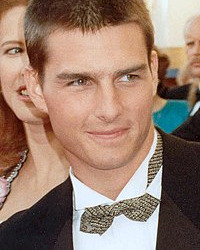
In the 1980s Cruise had several partners, among which the actress Rebecca De Mornay and the singer Cher stood out. He was married twice before his last marriage to Katie Holmes. The first time in 1987 with the actress Mimi Rogers, from whom he separated in 1990, and then with the actress Nicole Kidman, whom he met during the filming of Days of Thunder, and with whom he also divorced in a very public way at the end. 2001. His marriage to Kidman lasted almost eleven years and they were one of the most popular couples in Hollywood. They had no biological children but adopted two: Isabella Jane (born 1992) and Anthony Connor (born 1995). After starring together in Stanley Kubrick's film, Eyes Wide Shut, Tom Cruise and Nicole Kidman irreconcilably separated. In the June 2006 issue of Ladies' Home Journal, Kidman said she still loved Cruise: "He was huge; he still is. To me, he was just Tom, but to everyone else, he's huge. He was always lovely to me." and I loved him. I still love him." Additionally, the actress has expressed how shocked she was by her divorce.46 After two stable relationships, Cruise had an affair with the Spanish actress Penélope Cruz, with whom he starred in the film Vanilla Sky. This film is a version of a Spanish title called Abre los Ojos, directed by Alejandro Amenábar. He met Katie Holmes while searching for a co-star for his film Mission Impossible 3. His first public appearance was on April 29, 2005, in Rome, at the David di Donatello Awards, the Italian equivalent of the Oscars.
A few months later they got engaged. Cruise, in what was a shrewd and histrionic performance to please the excited female audience of host Oprah Winfrey's talk show The Oprah Winfrey Show, declared that he had fallen madly in love with Katie Holmes during the show's broadcast on television, starring in a scene as excessive as it was funny. climbing on a sofa and proclaiming his love.4849 Tom Cruise and Katie Holmes in 2009 Shortly after, Cruise proposed to Holmes on the morning of July 17, 2005, at the top of the Eiffel Tower in Paris; she accepted.50 At the press conference, attended by Holmes's mother, Cruise announced to the news: Today is a great day for me. I am engaged to a magnificent woman. The couple announced that Holmes was pregnant. On April 18, 2006, Cruise's first biological daughter was born, whom they named Suri. On November 18 of that year he married Katie Holmes, generating great excitement in Italy, the place chosen for the ceremony.
The ceremony, attended by many Hollywood stars, was celebrated by the rite of the Church of Scientology, at the Odescalchi castle in Bracciano, 35 kilometers from Rome. In June 2012, Katie Holmes filed for divorce from Cruise, citing irreconcilable differences and custody of Suri. According to TMZ, the main reason that led the actress to take the step was her husband's excessive obsession with Scientology.51 To separate from Tom Cruise, Holmes carried out the entire process in absolute secrecy, thanks to the help she received from Nicole Kidman, Cruise's ex-wife, who advised and supported her throughout the tough lawsuit.

NAME: Geordy Saul Alvear Blacio
COURSE: 2do "D"
DATE: 24 de Septiembre del 2023
1 note
·
View note
Photo

Mais recentemente, houve uma série de livros que colocaram o método científico sob o microscópio e o acharam necessário: Marian Lowe e Ruth Hubbard compilaram uma excelente crítica na Woman's Nature: Rationalizations of Inequality (1983). Isto foi seguido por Ruth Bleir's Science and Gender (1984) e Louise Newman's Men's [deasas]: Women's Realities. Joan Rothschild faz as mesmas críticas à tecnologia que as delineadas em relação à ciência em seu Machina Ex Dea: Feminist Perspectives on Technology (1983), e com seu livro iniciado nos anos 1920 e publicado em 1983, The Religion of the Machine Age, Dora Russell revela que há pouco de novo sobre o sistema de valores masculino e sua manifestação na ciência e na tecnologia, e pouco de novo sobre as reservas das mulheres em relação às 'máquinas' como soluções. Somente os homens, insiste ela, poderiam ter acreditado que as máquinas eram a única resposta aos problemas humanos e poderiam ter criado um culto de adoração às máquinas.
Do culto às máquinas vieram as terríveis máquinas de guerra; a deriva em direção à solução final e anti-humana, nos termos de Dora Russell.
Sua tese teve ressonância em publicações mais recentes como No Nukes de Anna Gyorgy (1979) e Does Khaki Become You? The Militarisation of Women's Lives (1983). Em contraste com a lógica da guerra, surgiu uma gama de entendimentos femininos sobre a lógica e a necessidade da paz.
Seguindo a tradição de Three Guineas de Virgínia Woolf (1938), houve muitos livros que ligam a ideologia masculina do domínio com a guerra, e que sugerem que o fim da ameaça de guerra só será alcançado com o fim da ideologia masculina do domínio. Mesmo de acordo com a ideologia masculina, menos da metade da população humana foi designada como "agressiva" e necessitada de "conquistas" e, com base na regra da maioria, da justiça - e da "tomada" - há um forte argumento feminista a favor da desejabilidade da introdução da cooperação e da paz.
Do livro ‘For the Record’, de Dale Spender.
0 notes
Photo
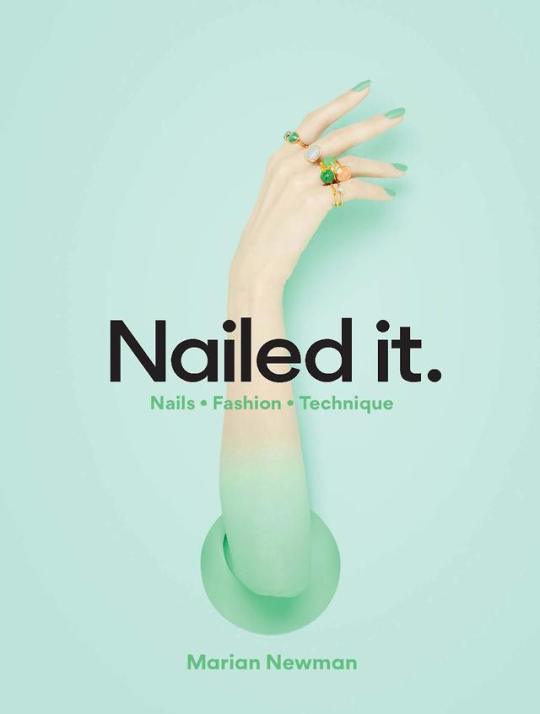

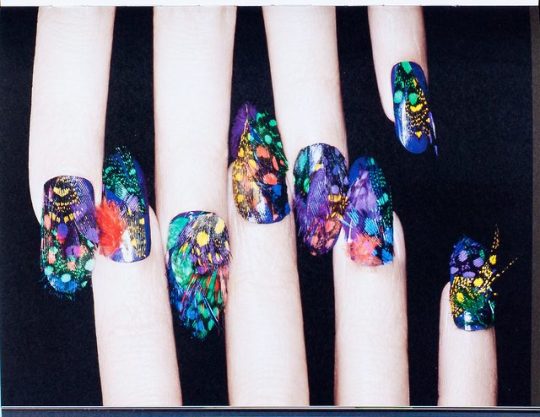

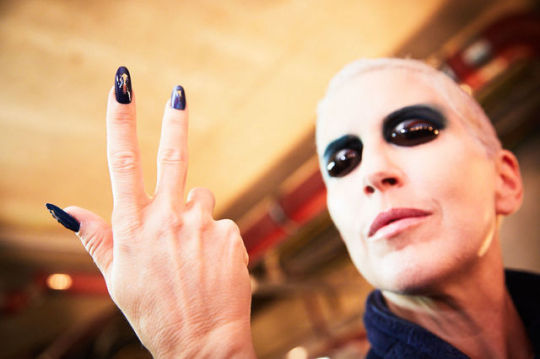



New from Laurence King Publishing and author and “Queen of Nails”, Marian Newman, Nailed It. Nails, Fashion, Technique. (Read more at Paper Mag. here.)
#books#marian newman#nailed it#nails#fashion#fingernails#design#art#art books#laurence king publishing#paper mag#book review
8 notes
·
View notes
